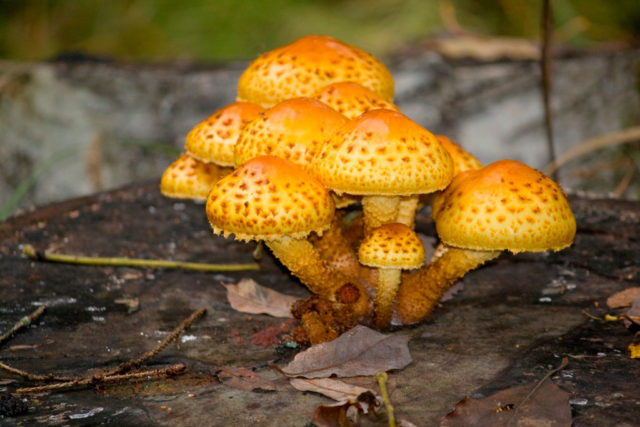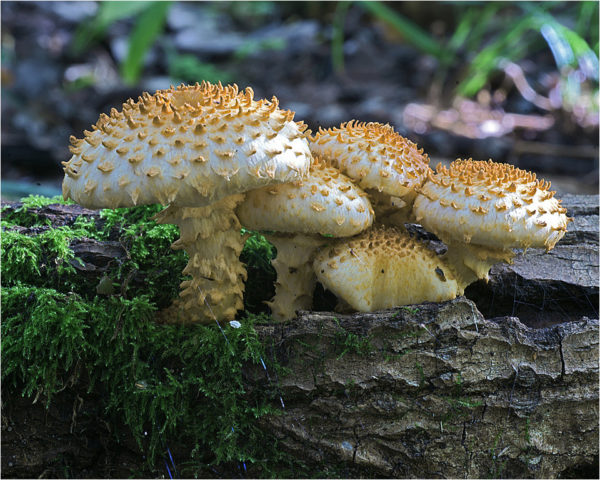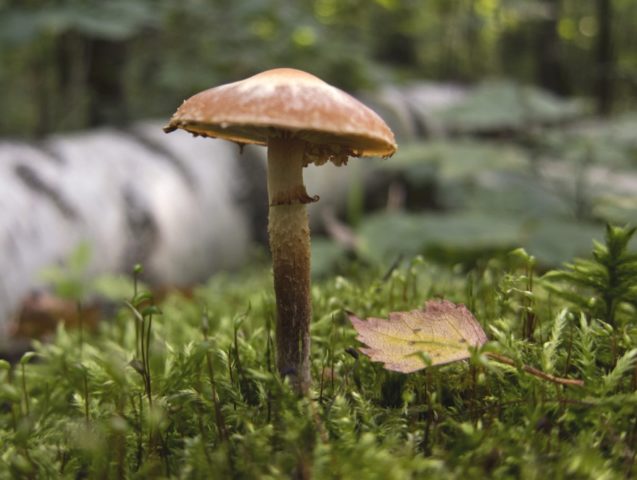Content
The fiery scale is a member of the Strophariev family. Its bright color makes the appearance very original. Thanks to her, the mushroom got its name. The people call it the royal honeydew, folio, willow. And in Latin it is called Pholiota flammans.
What does fire flake look like?
Fiery scales are ranked among the section of lamellar mushrooms. Her spores are located precisely in the plates. They are narrow, tightly pressed against the leg. The color of the plates in young mushrooms is orange-golden. Subsequently, he changes to a dirty redhead.
Description of the hat
Flame scales can boast of the royal size of a bright cap. Its dimensions can reach 17 cm in diameter. But often they do not exceed 8-9 cm. Young mushrooms are distinguished by the fact that the shape of the cap is similar to a bell. Over time, it becomes flatter, spread out.
The color of the caps varies from yellowish to gray-golden. They all have reddish scales evenly distributed over a dry surface. The scales are twisted upward, bristly. They fold in a concentric pattern. Delicate, bitter in taste, with a pungent smell, the pulp has a lighter yellowish tint. On the cut, its color does not change.
Leg description
The leg of the fiery scale is cylindrical, dense, solid, without voids, yellow or light brown in color. As the name suggests, it is covered in small scales. Their shade is slightly darker than the main tone. In length, the leg can grow up to 10 cm and its thickness does not exceed 1.5 cm.
In young mushrooms, the stem is surrounded by a fibrous scaly ring, which is not too high. Above it, the leg remains smooth, and below the ring - rough. Over time, it disappears. The pulp is brown.
Edible Flame Scale
Scales are considered inedible. But, like other representatives of the Strophariev family, it does not contain poisonous or toxic substances. It has a bitter taste and an unpleasant, harsh odor. For this reason, it is not used for food, although it is not formally poisonous.
Where and how it grows
The most characteristic places of distribution of fire scales are mixed and coniferous forests. She prefers stumps, deadwood, conifers, especially spruce. It can grow alone or in small groups.
The area of growth of Pholiota flammans is limited to the temperate zone of the northern hemisphere of the Earth. It is found in the forests of Europe, in the Urals and in Karelia, in the central part of Russia, in Siberia and in the Far East.
Fiery flake ripens from mid-July. You can collect it until the end of September.
Doubles and their differences
The mushroom has no counterparts. Most often, inexperienced mushroom pickers confuse it with other scales: golden, ordinary. Their appearance is similar, and the taste is practically the same.
Conclusion
Flame scale is an externally spectacular mushroom of the Strophariev family, which is quite rare in forests. It does not contain any poison. However, experts warn: it is not recommended to eat it.














